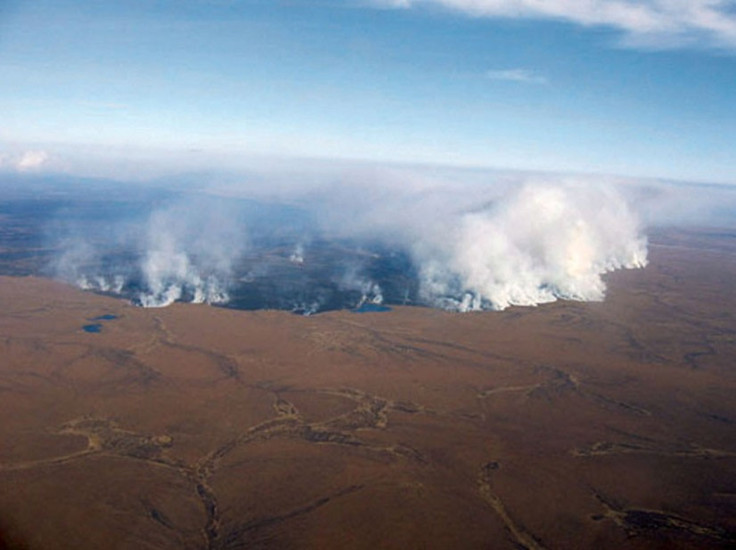Arctic Wildfires May Pose Threat to Global Climate

A huge wildfire that erupted in the Arctic north of Alaska four years ago threw up as much carbon dioxide into the atmosphere as the entire Arctic tundra absorbs annually, posing a threat to global climate.
In 2007, the Anaktuvuk River fire swept across more than 400 square miles, doubling the cumulative size of Alaskan tundra affected by fire since 1950. That fire was apparently ignited by a lightning strike.
According to a team of scientists, as reported in the journal Nature, a steadily warming Arctic would make such fires more frequent, resulting in grave climate consequences.
Although fires are relatively rare in the Arctic, conditions were unusually dry and warm in 2007, which led to rapid melting of Arctic ice in the sea.
"Most tundra fires have been very small -- this was an order of magnitude larger than the historical size," said Michelle Mack from the University of Florida in Gainesville, who led the research team, according to BBC.
"In 2007, we had a hot, dry summer; there was no rain for a long period of time. So the tundra must have been highly flammable, with just the right conditions for fire to spread until the snow in October finally stopped it."
That inferno vomited carbon into the atmosphere at a rate that was 100 times faster than usually oozes out of the ground during the Arctic summer -- About 2.1 million metric tons of carbon was released in the inferno.
However, BBC speculates that such warmer temperatures might also have some beneficial effects – for example, plant life could multiply which would not only radically alter the landscape of the tundra but also increase carbon absorption.
On the other side of the ledger, a greater frequency of fires on the tundra would likely intensify global warming (and accelerate the melting of the permafrost layer underneath the surface).
"Once permafrost melts beyond a certain depth on a slope, then all of the organic layer slides down the slope like a landslide," Mack told BBC News.
"This whole issue of melting can lead to other huge changes in drainage, in areas of wetlands - releasing carbon that's been frozen since the Pleistocene [era, which ended more than 10,000 years ago]."
According to TG Daily, Mack also commented: "The 2007 fire was the canary in the coal mine. In this wilderness, hundreds of miles away from the nearest city or source of pollution, we’re seeing the effects of a warming atmosphere. It’s a wakeup call that the Arctic carbon cycle could change rapidly, and we need to know what the consequences will be."
She added: "This fire was a big wakeup call, and it can happen again, not just in Alaska but in other parts of the Arctic, like Canada and Russia. Suppressing a fire in the wilderness is costly, but what if the fire causes the permafrost to melt? We need to have that discussion."
© Copyright IBTimes 2024. All rights reserved.





















